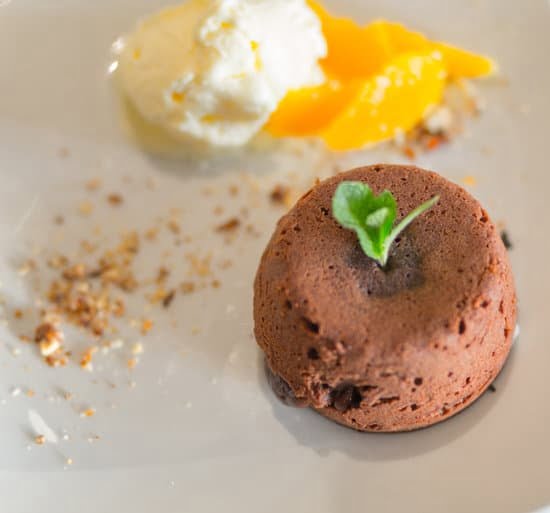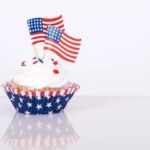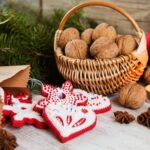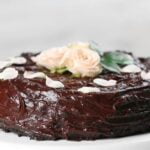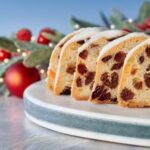Cake decoration is a beautiful art form that allows bakers to transform plain cakes into stunning, edible works of art. Whether you are a novice or an experienced cake decorator, the possibilities for creating unique and eye-catching designs are endless. But where do you start? What can you decorate a cake with to achieve professional-looking results?
In this article, we will delve into the fantastic world of cake decoration, offering guidance and inspiration to help you unleash your creativity and elevate your baking skills. We will explore the importance of choosing the right tools and ingredients for successful cake decoration and showcase a variety of techniques that can be used to transform plain cakes into visually stunning creations.
First and foremost, having the essential tools for cake decoration is crucial. From piping bags to spatulas and icing tips, these tools enable you to create intricate designs and add texture to your cakes. We will also introduce advanced tools like fondant sculpting tools and stencils that can take your cake decoration skills to the next level.
Next, we will delve into the world of edible decorations that can truly take your cakes from ordinary to extraordinary. Fondant, gum paste, and marzipan offer limitless possibilities for creating intricate designs and lifelike figurines. We will explore techniques such as edible painting, airbrushing, and sugar crafting that allow you to add depth, dimension, and personality to your creations.
Buttercream icing is another versatile tool in a cake decorator’s arsenal. With various techniques like piping borders, rosettes, and flowers, buttercream offers endless opportunities for creating beautiful designs. We will also discuss how food coloring can be used strategically to create vibrant and eye-catching patterns on your cakes.
If you prefer a more natural touch or want to embrace organic elements in your designs, we have got you covered too. Fresh flowers, fruits, herbs – all make exquisite decorations that bring elegance and natural beauty to any cake design. We will provide tips on safely incorporating these organic elements without compromising the taste or quality of your cake.
For those time-strapped bakers, we will also explore ready-to-use decorations that can add a touch of pizzazz to your creations. Edible pearls, sprinkles, and pre-made sugar flowers are just some examples that can save you time while still achieving visually appealing results.
But what about venturing outside the box? We encourage readers to think outside the (cake) box and push the boundaries of cake decoration with unconventional materials. Edible glitter, metallic accents, ribbons, and beads – these non-traditional elements can add a unique flair to your cakes. However, it’s vital to remember food safety guidelines when using unconventional decorations.
Ready to embark on this creative journey? In our article, we will provide helpful tips and tricks for both beginners and experienced cake decorators alike. We’ll address common challenges and offer solutions to help you achieve flawless finishes and overcome any hurdles along the way. Additionally, we’ll share valuable resources and references to inspire further cake decoration ideas.
So whether you are an aspiring cake decorator or someone who simply wants to elevate their baking skills, join us as we dive into the fantastic world of cake decoration. With endless possibilities before us, let’s unleash our creativity and create our own beautifully decorated masterpieces.
The Essential Tools for Cake Decoration
The world of cake decoration is a magical place where creativity and skill intertwine to create stunning edible masterpieces. To embark on this exciting journey, it is essential to have the right tools in your arsenal. In this section, we will explore the must-have tools for cake decoration and delve into their uses and benefits.
Piping Bags, Spatulas, and Icing Tips
Piping bags are a staple tool for any cake decorator. These flexible bags allow you to effortlessly pipe buttercream, royal icing, or ganache onto your cakes with precision and control. Invest in a variety of piping tips to achieve different effects such as stars, rosettes, or lettering. Coupled with spatulas of various sizes, these tools will be your go-to for creating smooth surfaces and spreading frosting evenly.
Fondant Sculpting Tools and Stencils
For those looking to venture into the realm of fondant decoration, fondant sculpting tools are essential. These tools come in a range of shapes and sizes to help you shape intricate details like flowers, leaves, or figurines. Stencils add another dimension to your designs by allowing you to create beautifully patterned cakes effortlessly. Explore different patterns and textures for endless possibilities.
Whether you are a beginner or an experienced cake decorator, having the right tools is crucial for success. Experiment with different techniques using piping bags, spatulas, icing tips, fondant sculpting tools, and stencils to unlock your creative potential. The next section will take us into the world of edible decorations that can elevate our cakes even further.
Edible Decorations
As you embark on your journey into the world of cake decoration, one of the most exciting aspects to explore is the realm of edible decorations. These versatile and artistic elements have the power to transform plain cakes into magnificent works of art. In this section, we will delve into the various edible decorations you can use to elevate your cake creations and showcase your creative flair.
The Versatility of Fondant, Gum Paste, and Marzipan
Fondant, gum paste, and marzipan are three popular types of edible decorations that offer endless possibilities for creating intricate designs and figurines. Fondant is a smooth icing-like substance that can be rolled out and draped over cakes for a flawlessly smooth finish. It can also be used to create decorative shapes and designs with molds or by hand sculpting.
Gum paste is a pliable sugar dough that dries quickly and retains its shape well, making it ideal for crafting delicate flowers, leaves, or other intricate details. It can be colored using food coloring gels or dusted with edible powders for added realism.
Marzipan is made from almond paste mixed with sugar and frequently used for covering cakes or shaping figures. Its malleability allows you to mold it into various shapes or even paint on it using edible paints.
Experimentation with Techniques: Edible Painting, Airbrushing, and Sugar Crafting
In addition to using fondant, gum paste, and marzipan as standalone decorations, there are numerous techniques you can experiment with to further enhance your cake designs. Edible painting involves using food coloring diluted with alcohol or lemon extract to create stunning hand-painted designs directly onto the cake surface or onto fondant decorations.
Airbrushing involves using an airbrush tool to apply a fine mist of edible colors onto the cake or fondant decorations. This technique allows for seamless gradients, shading effects, or even intricate stenciled designs.
Sugar crafting involves working with sugar and is often used to create delicate decorations such as lace, bows, or even intricate showpieces like sugar flowers. It requires precision and patience but can result in breathtakingly beautiful details that truly elevate your cake design.
By exploring these edible decoration options and experimenting with various techniques, you can unleash your creativity and take your cake decoration skills to new heights. The possibilities are endless, limited only by your imagination and willingness to try new things. So, let your inner artist come alive as you adorn your cakes with edible masterpieces.
Buttercream Beauties
When it comes to cake decoration, buttercream frosting is a versatile and delicious medium that offers endless possibilities. This delectable frosting can be used to create beautiful borders, rosettes, flowers, and more. In this section, we will explore the various techniques for using buttercream to elevate your cake designs.
Piping is a popular technique in buttercream decoration that allows you to add intricate details to your cakes. With a piping bag and different types of icing tips, you can create stunning borders, elegant rosettes, and even realistic-looking flowers.
There are numerous icing tip designs available, each producing unique shapes and textures on the cake surface. Whether you’re looking for a smooth and sleek finish or a delicate ruffled effect, experimenting with different piping techniques can take your cake decoration skills to the next level.
Adding vibrant colors to your cake design is another way to make it stand out. Food coloring gels can be mixed into the buttercream frosting to achieve any desired shade or hue. This opens up a whole new world of creative options when it comes to designing your cakes.
You can create ombre effects by blending multiple shades together or use contrasting colors for eye-catching designs. Don’t be afraid to experiment with different color combinations and techniques like color blending or marbling for truly unique results.
It’s important to note that achieving smooth surfaces on buttercream-frosted cakes can be challenging due to the soft consistency of the frosting. However, there are tricks you can use to improve the appearance of your finished product.
For example, using an offset spatula and starting with a crumb coat – a thin layer of frosting that seals in any loose crumbs – can help create a clean canvas for decorating. Additionally, refrigerating the cake before applying final decorations can help firm up the buttercream and make it easier to work with.
Buttercream frosting offers endless opportunities for creativity in cake decoration. With the right techniques, tools, and a bit of practice, you can transform your cakes into stunning works of art that not only taste delicious but also look visually appealing. Let your imagination run wild as you experiment with different piping designs, color combinations, and textures to create buttercream beauties that will impress both your loved ones and guests at any occasion.
Natural and Organic Decorations
As cake decoration continues to evolve, many decorators are turning to natural and organic elements to add a touch of elegance and beauty to their creations. Whether it’s fresh flowers, fruits, or herbs, these natural decorations can truly elevate a cake into a work of edible art. In this section, we will explore the world of natural and organic cake decorations, providing tips on how to safely incorporate these elements into your designs.
Fresh Flowers
One of the most popular choices for natural cake decoration is using fresh flowers. Not only do they add a beautiful pop of color, but they also bring a touch of nature’s delicate beauty to any cake. When choosing flowers for decorating purposes, it’s important to ensure that they are safe for consumption.
Stick with edible flowers like roses, lavender, or pansies, and make sure they have been grown without the use of harmful chemicals. Before placing the flowers on your cake, remove any stems or leaves that might come into contact with the icing.
Fruits and Herbs
Another way to embrace nature’s gifts is by incorporating fresh fruits and herbs into your cake design. These elements not only provide visual appeal but can also enhance the flavors of your cake. Consider using sliced strawberries or blueberries as garnishes or arranging them in artistic patterns on top of buttercream frosting.
Fresh herbs like mint or basil can be used as accents or to create small bouquets tied together with a ribbon. When using fruits and herbs in your cakes, make sure they are clean and free from blemishes.
Tips for Safely Incorporating Organic Elements
When working with natural and organic decorations, it’s crucial to prioritize food safety. Here are some tips to ensure you’re incorporating these elements safely:
- Wash all fruits, vegetables, and herbs thoroughly before using them.
- Avoid using any plants or flowers that may have been exposed to pesticides or other harmful chemicals.
- Use a barrier between the cake and the natural decorations, such as a small piece of parchment paper or food-safe wax paper.
- If inserting stems directly into the cake, make sure they are food-safe or wrap them with floral tape to prevent any contact with the cake.
- Avoid placing organic decorations on cakes that will be sitting out for long periods, as they may spoil or wilt.
By embracing nature’s gifts in cake decoration, you can bring a sense of freshness and beauty that is unmatched by synthetic alternatives. Just remember to prioritize food safety and experiment with different combinations of natural elements to create stunning designs. Let your creativity run wild and let nature inspire your cake decorating journey.
Ready-to-Use Decorations
For busy bakers who may not have the time to craft elaborate cake decorations from scratch, there are a variety of ready-to-use decorations available that can still make a stunning impact on any cake. These pre-made elements can save time without sacrificing the visual appeal of the finished product. In this section, we will explore some popular store-bought decorations and provide ideas on how to incorporate them tastefully and creatively.
One option for quick and easy decorations is edible pearls. These small, round sugar beads can add an elegant touch to any cake. They come in various colors, sizes, and finishes, making them versatile for different cake designs. Edible pearls can be used to create beautiful borders or scattered across the surface of a cake for a subtle but eye-catching effect.
Sprinkles are another popular choice for adding instant charm to cakes. Available in countless shapes, colors, and themes, sprinkles provide endless opportunities for creativity. Whether you choose classic rainbow sprinkles or opt for more unique shapes like stars or hearts, sprinkles can easily transform a plain cake into a festive celebration.
Pre-made sugar flowers are an excellent option for those looking to add a touch of botanical beauty to their cakes without spending hours handcrafting delicate blossoms. These edible floral decorations are available in various types and colors, allowing decorators to easily select blooms that complement their overall design aesthetic.
To showcase these ready-made decorations effectively, it’s important to consider how they fit into the overall look and theme of the cake. Using them sparingly as accents or focal points can create visual interest while keeping them from overpowering the design. Additionally, combining different types of ready-made decorations can yield even more unique and impressive results.
With these quick and easy solutions at hand, time-strapped bakers can still achieve beautifully decorated cakes without sacrificing their busy schedules. The key is to embrace these pre-made elements as tools for enhancing creativity and achieving stunning results in a fraction of the time.
Remember, cake decoration should be enjoyable, so don’t hesitate to experiment with a combination of ready-to-use decorations and your own unique ideas to create cakes that are both visually stunning and delicious.
| Ready-to-Use Decorations | Uses |
|---|---|
| Edible pearls | Add elegant borders or scattered accents on the cake surface. |
| Sprinkles | Create festive designs by sprinkling them over the cake. |
| Sugar flowers | Add botanical beauty to the cake without the need for handcrafting. |
Unconventional Cake Decorations
If you’re looking to take your cake decoration skills to the next level, why not think outside the box? Unconventional cake decorations can add a unique and unexpected touch to your creations, making them stand out from the crowd. In this section, we will explore some unconventional materials that can be used to decorate cakes and discuss how to incorporate them safely and creatively.
One unconventional decoration idea is edible glitter. Edible glitter is made from edible ingredients, such as sugar or gum arabic, and adds a shimmery sparkle to your cakes. It can be applied by dusting it onto buttercream or fondant surfaces using a clean dry brush. Alternatively, you can mix it with alcohol or clear extract and paint it onto your cake for a more precise design.
Another unconventional material that can be used for cake decoration is metallic accents. Metallic finishes add a touch of elegance and glamour to any cake. You can achieve this look by using edible metallic paints or luster dusts. These paints are typically alcohol-based and come in a variety of colors including gold, silver, bronze, and rose gold. Simply brush the paint onto your cake for a beautiful and eye-catching effect.
While most cake decorations should be edible, there are certain non-edible elements that can enhance the overall design of your cake when used tastefully and safely. Ribbons, beads, and even small toys or figurines can be incorporated into your cake design to add an extra dimension and visual interest. However, it’s important to keep in mind that any non-edible decorations should be removed before serving the cake.
Incorporating unconventional decorations into your cakes allows you to showcase your creativity and personal style. However, it’s important to consider food safety guidelines when experimenting with these materials. Make sure that any non-edible elements are securely attached to the cake and do not pose a choking hazard. Additionally, always inform your guests about the non-edible decorations and remind them to remove them before consuming the cake.
Tips and Tricks
Cake decoration is an art that requires a combination of skill, creativity, and attention to detail. To truly master the art of cake decoration, it’s important to learn some tips and tricks that can help elevate your creations to the next level. Whether you’re a beginner or an experienced cake decorator, here are some essential tips and tricks to keep in mind.
One common challenge in cake decoration is achieving smooth surfaces on cakes. To avoid lumps and bumps, start by leveling your cake layers before icing them. Use a serrated knife or cake leveler to trim off any domes or unevenness. Then, apply a thin layer of frosting called the crumb coat to seal in any loose crumbs. Allow the crumb coat to set before applying the final layer of frosting for a smooth finish.
Another tip for cake decorators is to consider the temperature of their workspace. Buttercream frosting is sensitive to heat and humidity, which can cause it to become soft and difficult to work with. If you’re working in a warm environment, consider chilling your cakes and tools before decorating. You can also place your finished cakes in the refrigerator for a few minutes between decorating steps to firm up the buttercream.
When it comes to piping borders and designs, using the right consistency of icing is crucial. For fine details like borders and lettering, use stiffer icing by adding more powdered sugar until it holds its shape when piped. For larger decorations like roses or rosettes, use softer icing by adding small amounts of milk or water until it becomes easy to pipe but still holds its form when piped onto the cake.
By keeping these tips and tricks in mind, you’ll be well on your way to mastering the art of cake decoration. Remember that practice makes perfect, so don’t be afraid to experiment and try new techniques. With time and dedication, you’ll be able to create beautifully decorated cakes that will impress everyone who sees and tastes them.
Conclusion
In conclusion, the art of cake decoration offers a world of endless possibilities and creative opportunities. Throughout this journey, we have explored the essential tools needed for successful cake decoration, including piping bags, spatulas, and icing tips. We have also delved into the wide array of edible decorations that can elevate a plain cake into a work of art, such as fondant, gum paste, and marzipan.
Additionally, we have harnessed the power of buttercream frosting and learned various techniques like piping borders and creating intricate flowers. We have even embraced nature’s gifts with fresh flowers, fruits, and herbs as organic decorations. For those time-strapped bakers, ready-to-use decorations like edible pearls or pre-made sugar flowers are great solutions.
But let’s not forget to think outside the (cake) box. Pushing the boundaries with unconventional materials such as edible glitter or metallic accents can truly make your cake stand out. However, it is crucial to always consider food safety guidelines when using these unconventional decorations.
Finally, I encourage you to let your creativity take the cake. Cake decoration is not just about following rules – it is about self-expression and enjoyment. Let your imagination run wild and experiment with different techniques and materials. With the tips and tricks provided throughout this article and a world of inspiration at your fingertips, there is no limit to what you can create. So go ahead – unleash your creativity and create your own beautifully decorated masterpieces.
Frequently Asked Questions
What do you use to decorate a cake?
When it comes to decorating a cake, there are numerous options available. One commonly used item is frosting or icing, which adds both flavor and visual appeal to the cake. You can choose from various types of frosting such as buttercream, cream cheese, or fondant, depending on the desired texture and design.
Another popular choice is using decorative elements like sprinkles, edible pearls, or colored sugar crystals that can be sprinkled or arranged on top of the cake. Edible flowers and fresh fruits can also be used to enhance the cake’s appearance. Additionally, piping bags and nozzles allow you to create beautiful designs by piping different patterns onto the cake.
What can I top a cake with besides frosting?
If you’re looking for alternatives to frosting when it comes to topping a cake, there are several options available for a unique twist in both taste and presentation. Whipped cream provides a lighter texture than traditional frosting and can be flavored with extracts or liqueurs to complement the cake’s flavor. Ganache is another indulgent option made from chocolate and cream that creates a shiny glaze for the cake once it sets.
Cream cheese or mascarpone cheese can also be spread over the cake as an alternative to traditional frosting, resulting in a creamy and tangy finish. Finally, fresh fruit compote or coulis can be drizzled over the cake for vibrant color and fruity notes.
How to decorate a cake for cheap?
Decorating a cake on a budget doesn’t mean compromising on creativity or visual appeal. There are several ways to decorate a cake for cheap while still achieving an impressive result. One option is utilizing everyday kitchen items creatively – consider using cookie cutters to trace shapes onto wax paper then cutting them out to create stencils for powdered sugar decorations.
This technique allows you to add intricate designs without needing expensive tools or materials. Another affordable approach is incorporating natural elements like herbs, edible flowers from your garden, or seasonal fruits as decorations on top of the cake for a fresh and visually pleasing result. Additionally, simple yet effective techniques like using a butter knife to create swirl patterns, or using toothpicks for marbling effects in the frosting can add an artistic touch without requiring specialized tools.

Welcome to our cake decorating blog! My name is Destiny Flores, and I am the proud owner of a cake decorating business named Cake Karma. Our mission is to provide delicious, beautiful cakes for all occasions. We specialize in creating custom cakes that are tailored specifically to each customer’s individual needs and tastes.

